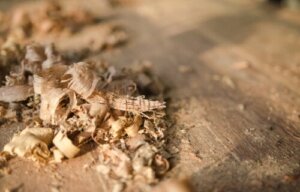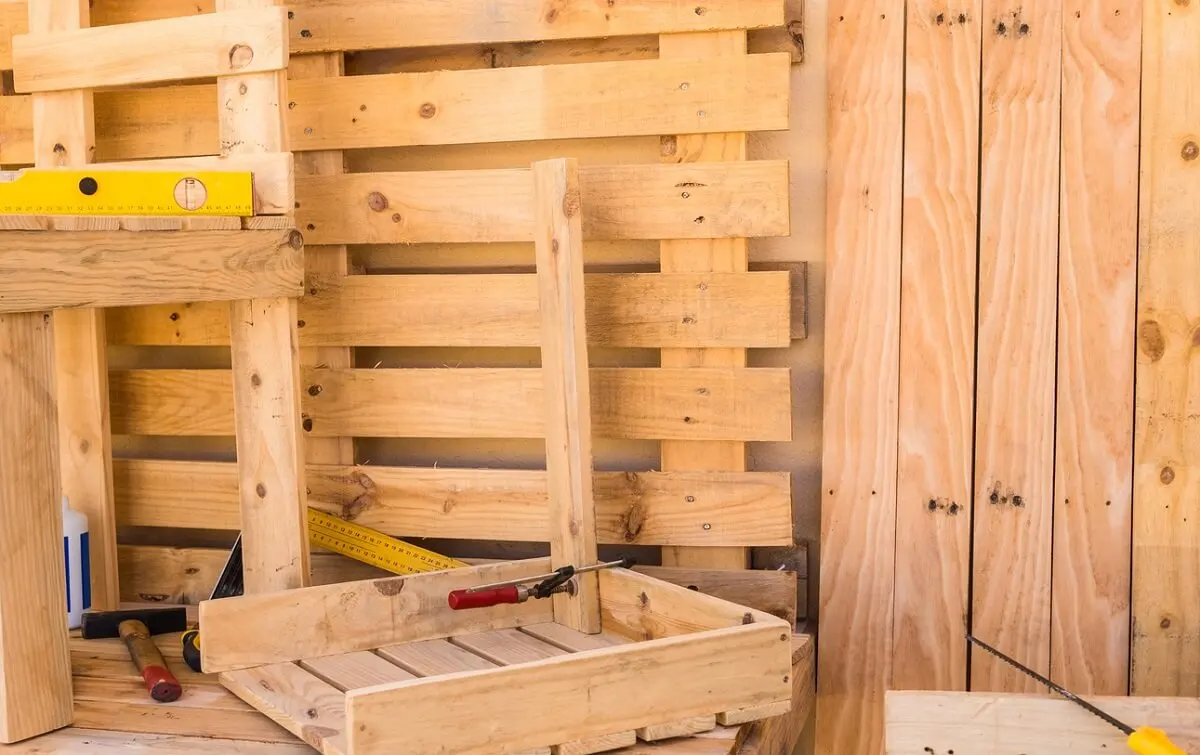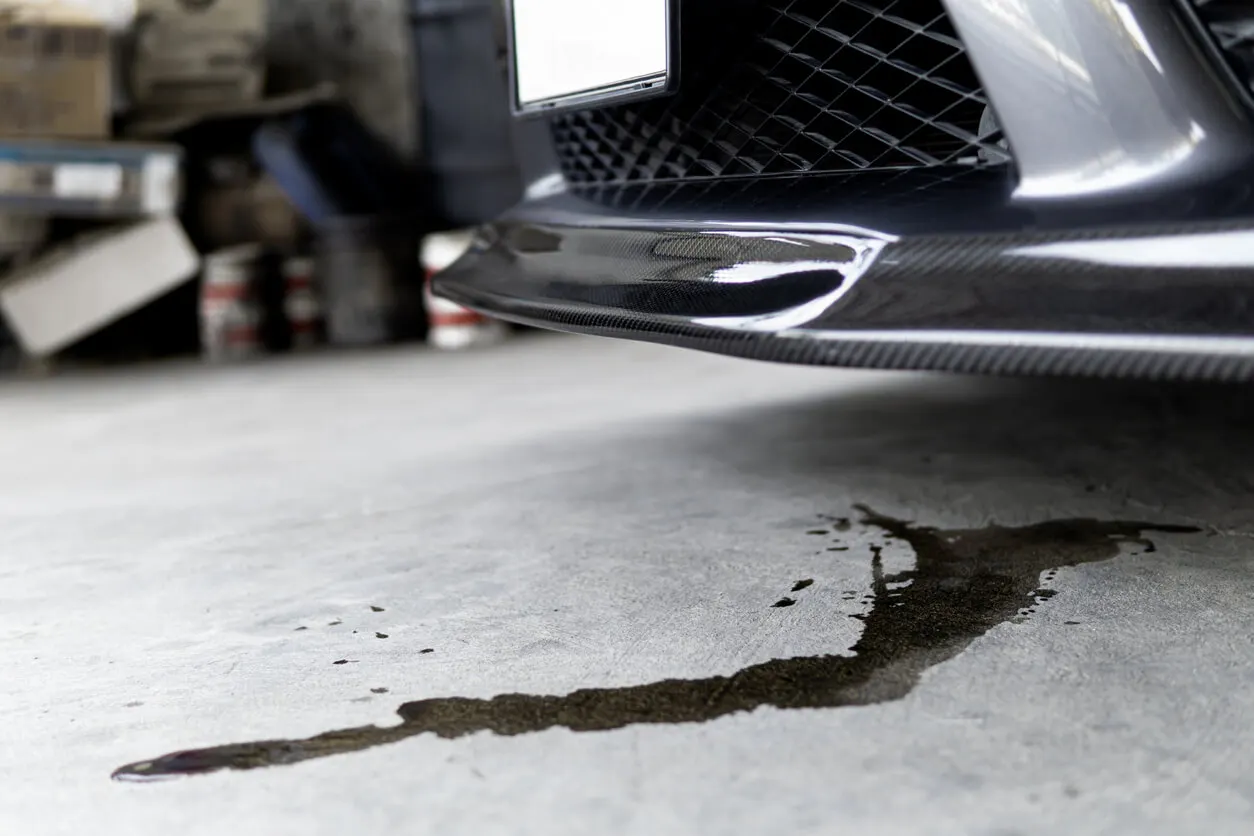8 Practical Uses for Sawdust in the Home

Sawdust can function as a plant fertilizer, as a fire starter and, in some cases, even as a stain remover.
For all these functions, it’s a very effective material. It’s simply a matter of knowing when and how to use it. Read the following tips and start applying them!
What is sawdust and how do you obtain it?
Sawdust is the waste generated when working with wood. Thus, sawing or cutting this material always produces a series of particles of varying sizes that, in principle, seem to have no function.
However, sawdust is often used to manufacture different objects in the carpentry or lumber mills themselves, such as chipboard or medium-density fiberboard. Beyond the industrial application, there are also practical uses for sawdust in the home.
To obtain sawdust, it’s enough to have worked the wood to create a table or shelf in the garage. The waste can be used for the following household functions that we will discuss.
In addition, it’s possible to obtain sawdust in specialized stores or in large home improvement stores.
8 practical alternative uses for sawdust in your home
If you’ve done any work with wood, wait before throwing it away. Chances are it will work for you in some of the following situations. Furthermore, you can also use sawdust generated by a nearby construction site or a carpentry shop that no longer reuses them.
1. You can use sawdust for covering cracks in the wall
Don’t know how to plug that little hole in the wall that becomes noticeable? Sawdust can be a great solution if prepared in a mixture of glue and putty.
Once it adopts the pasty texture, fill the hole with the preparation, spreading it well and covering the entire area. To leave the wall as good as new, sand it and apply a coat of paint.

2. You can also use it on your furniture
A similar effect occurs if you want to fill wooden furniture. In industrial contexts, sawdust is used for this purpose. Simply mix the material with putty and cover small gaps in wooden chairs or tables. Then, you can apply the paint that the object already had.
3. One of the practical uses you can give to sawdust at home is to turn it into fertilizer
Among the many materials and substances that can be used for plant growth, sawdust is a very effective one. It should be mixed with manure or a nitrogen supplement and spread in the substrate to strengthen plants. Different studies proved the positive effects of sawdust in composting.
4. Fire-starting tablets
One of the most convenient methods for lighting the fire of grills, barbecues, and other cooking elements is wood pellets. With sawdust, it’s possible to make your own.
Only a number of steps must be executed accurately and carefully:
- Procure the materials. You need candle wax, sawdust, a non-stick pan, and a carton or egg carton.
- Melt the wax. The first step is to melt the wax over medium heat in the nonstick pot.
- Add sawdust and mix. Once the wax is melted, add the sawdust and mix until a paste is formed. Use a wooden spoon, if possible.
- Turn off the fire. When the paste is formed, it’s time to turn off the stove.
- To place in the box. Deposit the mixture in the holes of the egg carton and let dry.
5. Pet and cat litter
Pet boxes can include sawdust in their filler. This is especially true for cats. This is a very useful material to use as a mattress and as a litter box.
6. Get rid of weeds
Compost is not the only way to transform sawdust into a useful object for plants. It also works as a natural herbicide. Thus, simply sprinkle it along the edges of garden paths, and it will stop weeds from growing.
7. Use sawdust to remove oil stains
Perhaps, one of the most effective applications of sawdust is to remove automotive oil stains from the ground. This is due to its great absorbent capacity.
It works well with complex stains, such as those generated by oils and paints. For example, if you have had a spill in the kitchen or on the garage floor from a car leak, spreading a good amount of sawdust to cover the stain will help.
Let the material work for two to three hours. Then, remove and clean the remains. You may not know it, but different studies, such as the one carried out by the Monterrey Institute of Technology, demonstrated the effectiveness of sawdust in absorbing oil stains.

8. You can also use sawdust for general cleaning
Beyond specific stains, you can also opt for general cleaning of the floor by applying sawdust. Simply wet the material with water and then spread it all over the space. When you pass the broom, the sawdust will have already acted and the absorption of dust and dirt will be much more complete.
Read about Imitation Wood Grain: How to Apply this Painting Technique
Protect your floors with practical uses for sawdust in the home.
Sawdust can also work to prevent stains. By spreading some over the entryway of the home with the intention of resting your feet before entering, the material absorbs moisture from the sole. This tactic is effective on rainy days when dirt from the shoe is tracked inside.
So, what trick will you use in your home? What was your favorite?
All cited sources were thoroughly reviewed by our team to ensure their quality, reliability, currency, and validity. The bibliography of this article was considered reliable and of academic or scientific accuracy.
- Castro Garibay, Sandra Luz et al. “Caracterización Física y Química de Sustratos Con Base En Corteza y Aserrín de Pino.” Madera y Bosques 25.2 (2019): n. pag. Madera y Bosques. Web. Disponible en: https://myb.ojs.inecol.mx/index.php/myb/article/view/e2521520
- Pineda-Pineda, Joel, Sánchez del Castillo, Felipe, Ramírez-Arias, Armando, Castillo-González, Ana María, Valdés-Aguilar, Luis Alonso, & Moreno-Pérez, Esaú del Carmen. (2012). Aserrín de pino como sustrato hidropónico. I: Variación en características físicas durante cinco ciclos de cultivo. Revista Chapingo. Serie horticultura, 18(1), 95-111. Recuperado en 03 de enero de 2023, de http://www.scielo.org.mx/scielo.php?script=sci_arttext&pid=S1027-152X2012000100007&lng=es&tlng=es
- Serret-Guasch N, Giralt-Ortega G, Quintero-Ríos M. Caracterización de aserrín de diferentes maderas. Tecnología Química [Internet]. 2016;XXXVI(3):468-479. Recuperado de: https://www.redalyc.org/articulo.oa?id=445546669012
- Téllez Carmona, José Manuel. Absorción de petróleo crudo, diésel y aceite automotriz gastado por residuos lignocelulósicos y su aplicación como sistema de disposición de hidrocarburos MAESTRÍA EN CIENCIAS EN DESARROLLO SOSTENIBLE. INSTITUTO TECNOLÓGICO Y DE ESTUDIOS SUPERIORES DE MONTERREY CAMPUS ESTADO DE MÉXICO. Disponible en: https://repositorio.tec.mx/handle/11285/628475?locale-attribute=es
This text is provided for informational purposes only and does not replace consultation with a professional. If in doubt, consult your specialist.








